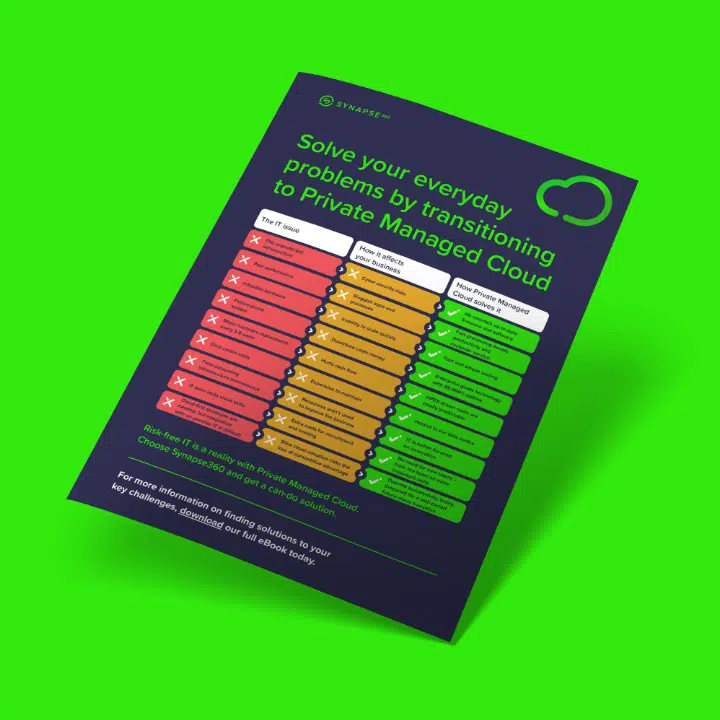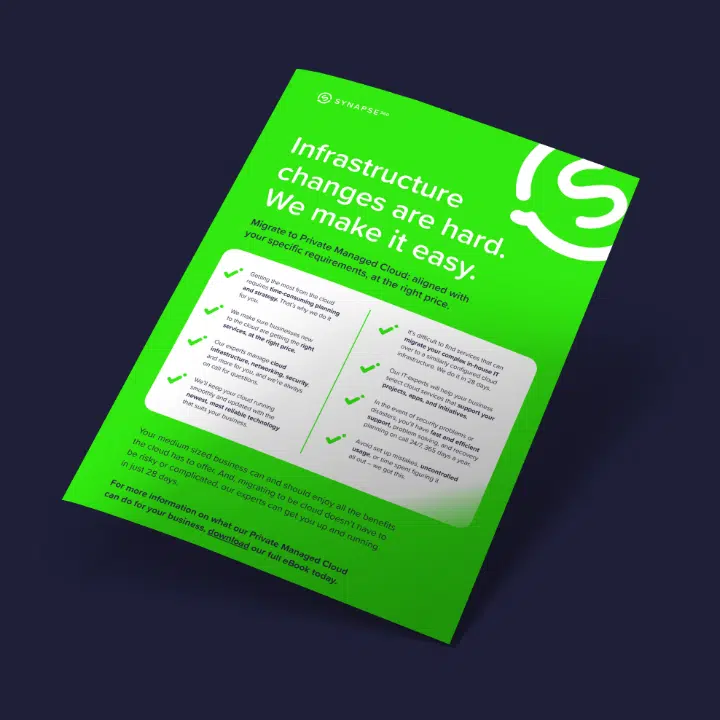
Despite its popularity, some still firmly oppose the public cloud. Overcoming the doubters is much easier if you’re a step ahead. Here are some of the most common concerns we hear and our take on dealing with them.
“It’s not secure”
Public cloud infrastructure isn’t “public” – no-one else can see or touch your data – and it is extremely secure. Data centres strictly apply ISO 27001, maintain large teams of security specialists, enforce maximum physical safeguarding, and rapidly implement any security upgrades or patches.
However, you need to play your part too. Under the “shared responsibility” model for PaaS or IaaS security, a business is responsible for its platforms, applications, identity and access management, its own data encryption, customer data backup and many other aspects of a deployment.
Public cloud vendors offer comprehensive security tools to handle this. But you’ll need cloud experts that know how to turn them on, configure and maintain them correctly.
“I don’t trust cloud backup and disaster recovery”
Top notch on-premises backup and document recovery – like maintaining a spare data centre – is expensive and complex. Many SMEs don’t invest and are vulnerable.
In contrast, public cloud infrastructure offers superb backup and document recovery features at much lower cost.
- Only pay for DR storage when used, no need to buy and maintain just in case
- Your instances are replicated across multiple UK data centres
But the IaaS/PaaS shared responsibility model applies again. Following any outage, most cloud providers only guarantee to restore your virtual machines (VMs), not the data housed on them.
The VMs’ applications, workloads or services are your responsibility; so, implement a properly configured backup and document recovery strategy from the start – or risk outages and data loss.
“It won’t be compliant”
Almost every business must comply with multiple privacy and security standards and regulations, for example, GDPR, PCI and SOC. Cloud vendors like Microsoft Azure have excellent compliance tools and privacy policies, such as:
- Azure Security Center
- Azure Compliance Manager
Use these to set up your compliance environment, monitor activity and be alerted automatically to any issues; however, their initial manual configuration is complex and will be different for every business. Choose someone familiar with the process for your first deployment.
“We’ll lose control”
As public cloud makes most of your on-premises servers, storage, and other hardware redundant, you’ll no longer directly control your IT infrastructure. Often you have little influence on the hardware a workload runs on. You’re also trusting your public cloud provider to maintain performance.
But the upside is well worth it. The right public cloud deployment massively simplifies storage, computing, networking, and security maintenance. You’ll always have cutting-edge technology on tap, not a six-year-old server. And that frees up your IT team to create real value for the business.
“Can we rely on public cloud performance?”
The public cloud’s instant scalability delivers all the performance you need and more, almost all the time. But in exceptional circumstances where everyone needs extra resources simultaneously, its shared nature can mean providers occasionally struggle and speed drops.
At the start of the pandemic, with tens of millions of new homeworking users and demand soaring, every major provider had performance issues. But they rapidly expanded their giant data centres to cope – impossible for traditional on-premises providers to achieve at that scale.
How can Synapse 360 help your business?
Ready to find out? Speak to an expert – Call us on 0330 660 0001 or email hello@synapse360.com








